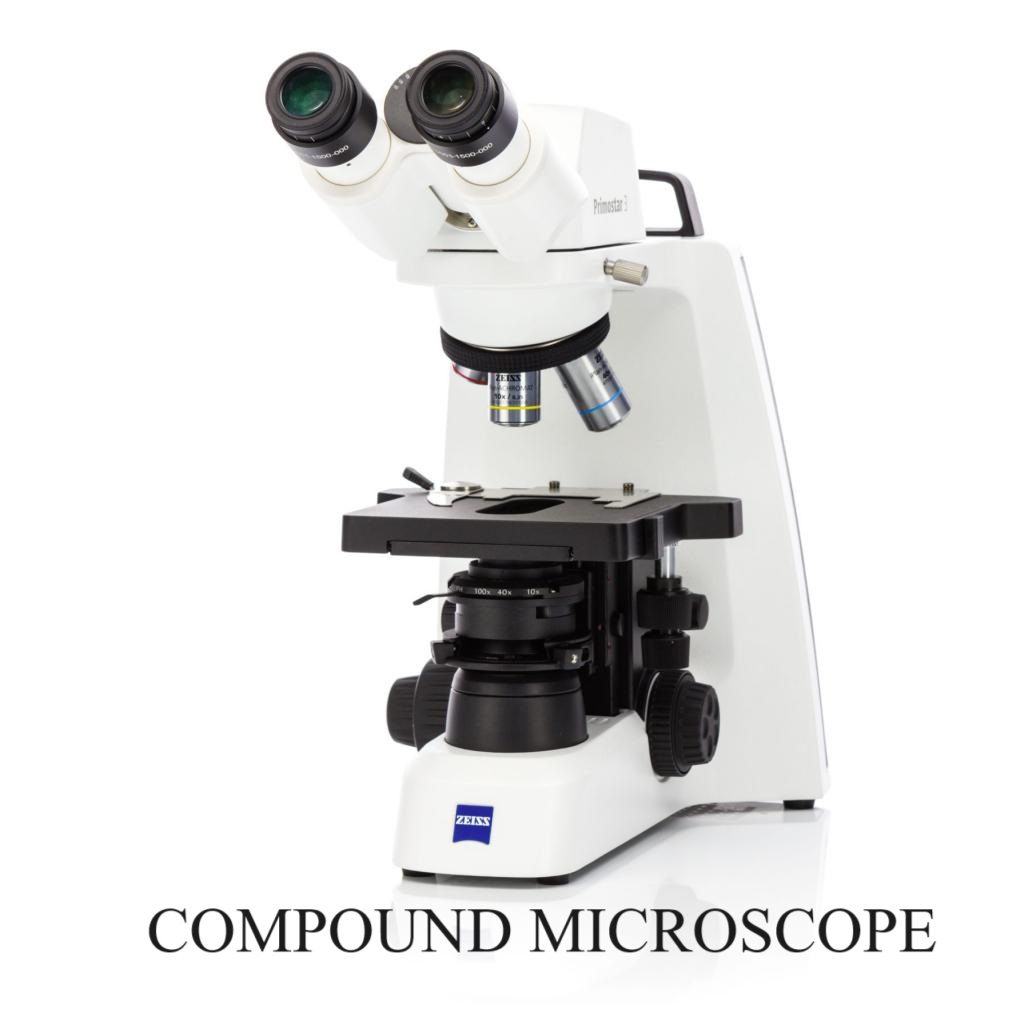- OBJECTIVE:
- To lay down a procedure for operation of compound Microscope, Make: ZEISS.
- SCOPE:
- This SOP is applicable to the procedure for operation of compound Microscope at {Company Name} {Location}.
- RESPONSIBILITY:
- Officer/Executive/Designee (QC) Micro. – Shall be responsible to follow the procedure as per SOP.
- Head/Designee Quality Control – Shall be responsible for ensuring compliance as per SOP.
- ACCOUNTABILITY:
- QA Head shall be Accountable for implementation of SOP.
- OPERATING PROCEDURE OF COMPOUND MICROSCOPE:
- MAKE: ZEISS
- COMPOUND MICROSCOPE: A compound microscope is a scientific instrument that uses a combination of lenses to magnify objects much smaller than what can be seen with the naked eye. It is a powerful tool used in various fields, including biology, medicine, and materials science, to examine cells, tissues, microorganisms, and other tiny structures.

- Operation: Ensure the cleanliness of the working place and the instrument.
- Switch on the instrument. Setting interpupillary distance and viewing height of the eye piece. (Swing the eyepiece tubes symmetrically slight toward or away from one another to adjust the distance between the tubes to individual interpupillary distance).
- Adjust the transmitted light bright field on the microscope.
- First place a contrasty specimen slide with the 0.17 mm cover slip being top in the specimen holder of the mechanical stage. (Fix the slide by means of the spring lever)
- The microscope stand is equipped with a phase or dark –field slider; pull this slider out to the left as far as it will go to adjust the illumination intensity.
- Turn the rotation knob on microscope stand to adjust the illumination intensity.
- Move the abbe condenser up to the top mechanical stop by turning knurled knob.
- Set the control lever of the aperture diaphragm to mid-position.
- Adjust the low power objective, by rotating the revolving nosepiece in position.
- Close the luminous-field diaphragm until it becomes visible in the field of view.
- Adjust the desired magnification (4X, 10X, 40X, 100X) by swinging in the corresponding objective.
- Place the slides on the stage, lower down the objective while observing through the eye piece, till it appears clearly (if the oil immersion objective (100X) is in use, place a cover slip on smear and add one drop of immersion oil (Cedar wood oil) on the slide before placing it on the stage and then lower down the objective lens just to touch the oil drop).
- Make the field clearer with the help of fine adjustment and then observe the slide.
- Slide can be moved in left, right, upper and lower direction to observe the complete smear area with help of slides stage screw and coarse adjustment.
- After completion of observation, remove the slide, clean the objective lens and condenser with cotton soaked in xylene.
- Do not allow the oil to dry on the lens.
- Switch ‘off’ the instrument when not required.
- Instructions:
- Do not touch the optical surfaces.
- Cover the instrument with the dust cover after every use.
- Do not place the microscope in a humid room (Maximum humidity <75%).
- ABBREVIATIONS:
| No. | : | Number |
| SOP | : | Standard Operating Procedure |
| QC | : | Quality Control |
REVISION HISTORY:
CHANGE HISTORY LOG
| Revision No. | Details of Changes | Reason for Change | Effective Date |
| 00 | New SOP | Not Applicable | To Be Recorded Manual |
Click the link for download word file copy of this document:
https://pharmaguidehub.com/product/operation-of-compound-microscope-make-zeiss/
